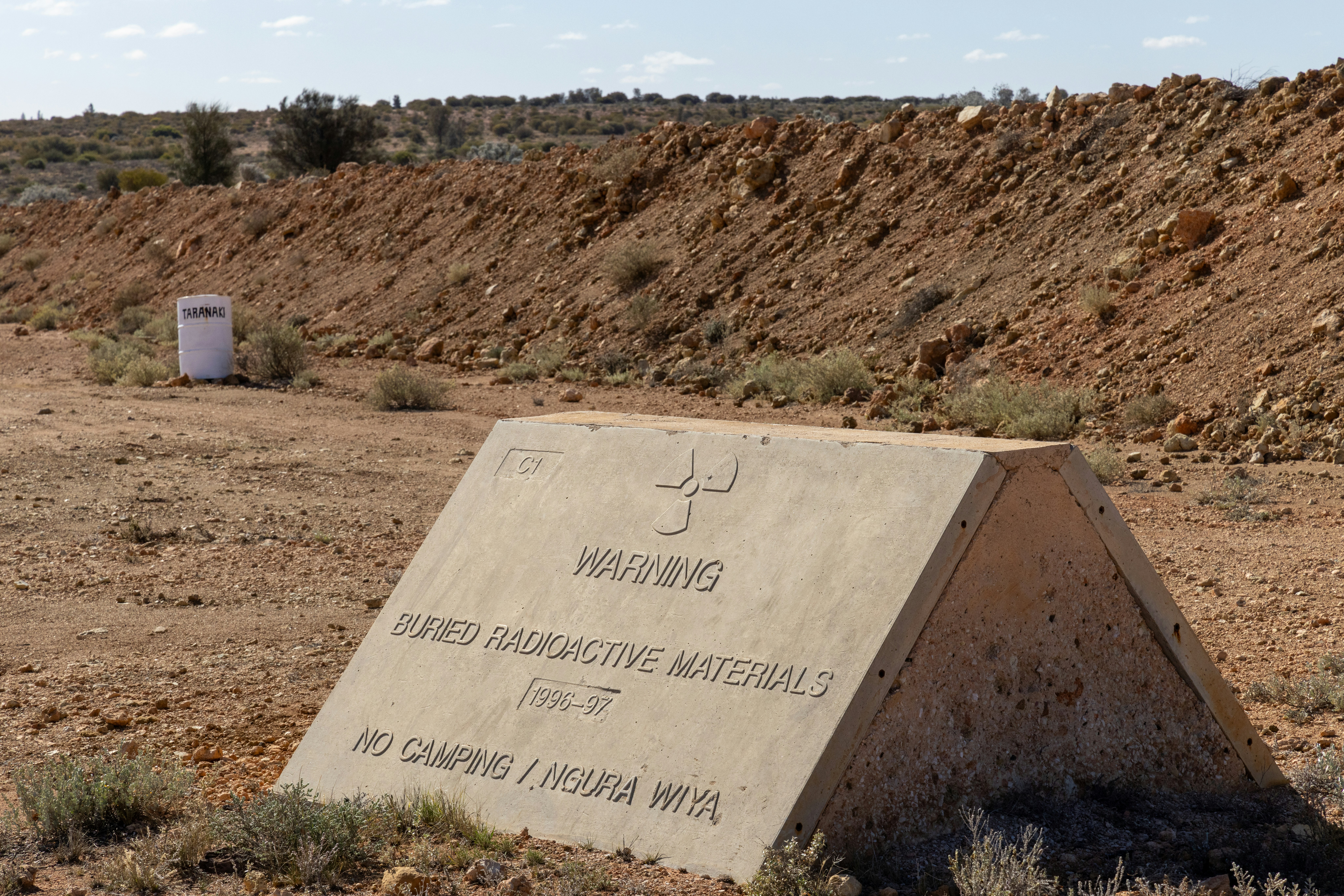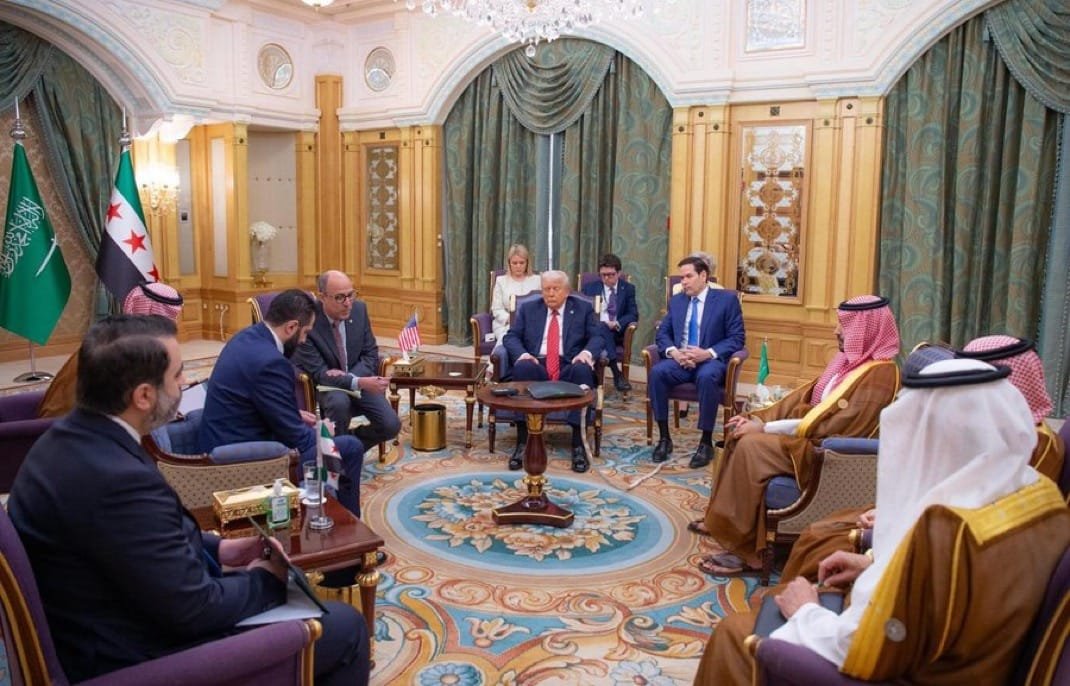
Introduction to Nuclear Weapons
Nuclear weapons are explosive devices designed to release energy through nuclear reactions, primarily fission or fusion, resulting in devastating destruction over vast areas. Their unique capability to unleash colossal amounts of energy from minimal mass distinguishes them from conventional explosives. Understanding nuclear weapons requires a deep dive into their underlying principles, historical context, and classification.
The concept of nuclear weapons emerged during the early 20th century, amid advancements in nuclear physics. Fission, a process that involves splitting atomic nuclei, was first demonstrated in 1938 by German scientists Otto Hahn and Fritz Strassmann. This discovery paved the way for the development of atomic bombs, which gained notoriety during World War II following the bombings of Hiroshima and Nagasaki in 1945. The resulting devastation demonstrated the overwhelming power of nuclear explosives and marked the beginning of the nuclear age.
In addition to fission bombs, which utilize the explosive potential of heavy elements like uranium or plutonium, there are fusion bombs, also known as thermonuclear weapons. Fusion bombs achieve their staggering yields by fusing light atomic nuclei, such as hydrogen isotopes, at extremely high temperatures, a process exemplified by the hydrogen bomb. This duality of nuclear weapon types underscores the complexity and varied applications of nuclear technology in military strategy and geopolitical power dynamics.
The development and proliferation of nuclear weapons have led to significant global discourse surrounding issues of security, ethics, and international relations. Treaties aimed at nuclear non-proliferation and disarmament reflect the world’s concern over the dangers posed by these weapons. As nations continue to navigate the politics of nuclear armament, understanding the foundations of nuclear weapons becomes increasingly crucial in addressing future threats and maintaining global peace.
The Evolution of Nuclear Bombs
The development of nuclear bombs has undergone a complex evolution since the first successful atomic bomb test in 1945, known as the Trinity Test. This event marked humanity’s entry into the nuclear age, as it demonstrated the destructive power of nuclear fission. Following this groundbreaking achievement, several nations embarked on their own nuclear weapons programs, leading to a global arms race during the Cold War. Key players such as the United States and the Soviet Union focused intensely on advancing their nuclear capabilities, leading to the creation of more powerful bombs.
In 1952, the United States successfully tested the first hydrogen bomb, significantly increasing the yield of nuclear weapons through thermonuclear fusion. The Soviet Union soon followed, further escalating global tensions. Countries across the world, such as the United Kingdom, France, and China, developed their own nuclear arsenals, contributing to a proliferation that required international attention and management. The creation of treaties, such as the Treaty on the Non-Proliferation of Nuclear Weapons (NPT) in 1968, aimed to curb the spread and proliferation of nuclear arms while promoting peaceful uses of nuclear technology.
As time progressed, both advancements in technology and changes in geopolitical landscapes influenced nuclear weapons development. The introduction of precision-guided munitions and missile defense systems transformed how nations viewed their nuclear arsenals. Additionally, more recent developments, including the emergence of rogue states and non-state actors with potential access to nuclear capabilities, have led to renewed concerns regarding nuclear proliferation. With modern advancements in nuclear technology, nations continue to refine and validate their nuclear deterrence strategies, highlighting the weapon’s importance in international relations and diplomacy.
Criteria for Assessing Danger
Determining the danger level of nuclear bombs necessitates a meticulous assessment of various factors that collectively contribute to their potential impact on global security. The most significant criterion is the yield or explosive power of the bomb, typically measured in kilotons or megatons. This metric indicates the bomb’s capacity to cause destruction, impacting both immediate surroundings and extending to a broader geographical area. Higher yields can result in catastrophic damage, increasing the bomb’s overall danger level.
Another crucial factor is the delivery system associated with a nuclear weapon. The effectiveness of a nuclear bomb’s delivery method, which can range from short-range missile systems to long-range intercontinental ballistic missiles (ICBMs), plays a vital role in its assessable danger. A bomb that is easily deployable and can reach its target quickly poses a more immediate threat compared to one that relies on older, less effective delivery mechanisms. Thus, advancements in delivery technology independently amplify the potential risks associated with nuclear bombs.
Potential for collateral damage is yet another important consideration. This aspect examines the resulting effects of a nuclear explosion on civilian populations, infrastructure, and the environment. Higher danger levels are attributed to bombs that can contaminate vast areas with radiation, leading to long-term public health crises and ecological destruction. Furthermore, the geopolitical implications of possessing such devastating weapons cannot be ignored. The mere existence of dangerous nuclear bombs can lead to an arms race among nations, shifting balances of power and increasing tensions worldwide.
Ultimately, when assessing the danger of nuclear bombs, it becomes evident that a multitude of interconnected factors must be evaluated. By analyzing yield, delivery systems, collateral damage potential, and geopolitical ramifications, a comprehensive understanding of the threat posed by nuclear weapons can be attained.
The Tsar Bomba: A Case Study
The Tsar Bomba, a product of the Soviet Union’s rigorous nuclear program, stands as the most powerful nuclear weapon ever detonated. Officially designated as AN602, this fusion bomb was developed during the Cold War, a period characterized by intense rivalry and the race for nuclear supremacy between the United States and the Soviet Union. The Tsar Bomba’s design embodies a unique two-stage thermonuclear mechanism, utilizing both fission and fusion reactions to achieve its astonishing yield.
Detonated on October 30, 1961, over the remote Novaya Zemlya archipelago, the bomb produced an estimated explosive yield of 50 megatons, equivalent to approximately 3,800 times the bomb dropped on Hiroshima. This staggering level of power resulted in a massive fireball that reached heights of nearly 65 kilometers, with shockwaves that were felt hundreds of kilometers away. The blast generated by the Tsar Bomba was so immense that it incinerated everything within a radius of approximately 35 kilometers and caused significant destruction far beyond that immediate area.
The bomb’s design was remarkably intricate. It featured a primary fission stage, which triggered a secondary fusion stage, utilizing lithium deuteride. This dual-stage process was intended to maximize yield while minimizing the complexity of the weapon. Importantly, the Tsar Bomba was engineered to be a demonstration of Soviet nuclear prowess rather than a practical weapon for warfare. Its massive size and weight exceeded the capabilities of existing aircraft for deployment, confining its practical application to the realm of deterrence.
In summary, the Tsar Bomba serves as a pivotal case study in the discussion of nuclear weapons. Not only does it exemplify the scientific advancements made during the nuclear arms race, but it also raises crucial ethical considerations regarding the destructive potential of such formidable devices. Its sheer magnitude establishes a benchmark for evaluating the latent dangers associated with nuclear armaments globally.
Modern Nuclear Threats
The landscape of nuclear weaponry has evolved significantly since the dawn of the atomic age. Today, several nations maintain active nuclear arsenals, each with varying levels of sophistication and delivery capabilities. The main countries with established nuclear programs include the United States, Russia, China, France, and the United Kingdom, all of which possess a considerable stockpile of warheads. Additionally, India, Pakistan, and North Korea also contribute to the contemporary nuclear threat landscape, with varying degrees of technological advancement and geopolitical motivations fueling their programs.
The current nuclear threat is not just about the number of warheads, but also about the systems employed to deliver them. Many modern nuclear states have developed advanced intercontinental ballistic missiles (ICBMs) that can strike targets thousands of miles away with high precision. Submarine-launched ballistic missiles (SLBMs) further enhance the credibility of nuclear deterrent operations, as they provide a second-strike capability, ensuring that a country can respond to a nuclear attack even if its land-based arsenal is compromised.
Moreover, emerging technologies have raised new concerns in the realm of nuclear warfare. Hypersonic glide vehicles, for instance, have the potential to outpace traditional missile defenses, rendering them less effective. This rapid advancement necessitates constant vigilance and adaptation of global security policies. Additionally, advancements in cyber capabilities pose a significant risk, as they could compromise the command and control structures of nuclear forces, increasing the potential for accidental launches or unauthorized use of nuclear weapons.
The geopolitical implications of modern nuclear threats are profound. As nations perceive their security in relation to others, an arms race may ensue, leading to heightened tensions and potential conflicts. The necessity for diplomatic efforts in nuclear disarmament and non-proliferation remains critical in addressing these contemporary challenges while ensuring a sustainable and secure future in a world where nuclear weapons persist as a cornerstone of military strategy.
Global Impact of Nuclear Weapons
Nuclear weapons have far-reaching implications that extend beyond their immediate destructive capabilities. The possession of nuclear bombs affects international relations significantly, as nations often align themselves based on their nuclear capabilities or affiliations. Countries with robust nuclear arsenals tend to enjoy a heightened status in geopolitical discussions, while those lacking such weapons may feel marginalized. This creates a global dynamic that can lead to both cooperation and conflict, as nations navigate complex relationships driven by mutual interests and security concerns.
Arms control treaties have emerged as a critical mechanism for managing the proliferation and potential deployment of nuclear weapons. Agreements such as the Treaty on the Non-Proliferation of Nuclear Weapons (NPT) have been instrumental in curbing the spread of nuclear arms and promoting disarmament initiatives. These treaties aim to foster a balanced approach to nuclear armament by ensuring that nuclear states commit to reducing their arsenals while enabling non-nuclear states to pursue civilian nuclear technology under strict regulations. However, adherence to these agreements fluctuates, influenced by shifts in national policy and global tensions.
The risks associated with nuclear proliferation pose an ongoing threat to global security. As more nations acquire nuclear capabilities, the likelihood of nuclear conflict increases. Additionally, the potential for non-state actors to obtain nuclear materials amplifies these risks, as they may lack the governance structures necessary to manage such destructive power. The resulting uncertainty can destabilize regions and lead to an arms race, prompting nations to bolster their military capabilities in response to perceived threats. Therefore, fostering dialogue and cooperation among countries is essential to mitigate the dangers associated with nuclear weapons and promote a more stable international landscape.
Nuclear Weapons in Popular Culture
Nuclear weapons have long been a subject of fascination and fear within popular culture, appearing across various mediums, including literature, film, and art. These portrayals often serve to reflect societal anxieties about nuclear danger, shaping public perception and influencing political discourse. In literature, authors such as Kurt Vonnegut in “Cat’s Cradle” and Nevil Shute in “On the Beach” explore the catastrophic consequences of nuclear war, inviting readers to contemplate the moral and existential implications of such destructive power.
Films have played a crucial role in the depiction of nuclear weapons, often dramatizing the tension surrounding their potential use. Classics like “Dr. Strangelove” satirize the absurdity of nuclear strategies, while more serious entries like “The Day After” illustrate the terrifying aftermath of nuclear conflict. These movies not only entertain but also provide a medium for dialogue about the ethical dimensions of nuclear armament. They engage audiences by merging entertainment with critical thought, thereby increasing awareness about the gravity of nuclear danger.
The visual arts also contribute to the cultural discourse surrounding nuclear weapons. Artists have used various forms, from paintings to installations, to confront viewers with the inherent dangers of nuclear proliferation. Through powerful imagery, these artworks evoke emotional responses, prompting reflection on issues like deterrence and the ethical implications of scientific advancements. By examining these portrayals, we gain insight into how popular culture presents nuclear weapons, influencing both individual perspectives and broader societal views.
Ultimately, the representation of nuclear weapons in popular culture not only informs the public about their dangers but also stimulates ongoing discussions about the future of global security. Through various forms of artistic expression, these narratives challenge audiences to engage with the urgent realities of nuclear armament, underscoring the importance of discourse as humanity grapples with the potential consequences of these formidable weapons.
Current Initiatives for Disarmament
The global landscape of disarmament is significantly shaped by various initiatives aimed at reducing the proliferation of nuclear weapons and promoting a safer world devoid of nuclear threats. The primary framework governing these initiatives is founded on international treaties and agreements that encourage nations to commit to disarmament and non-proliferation.
One of the most notable treaties is the Treaty on the Non-Proliferation of Nuclear Weapons (NPT), which was opened for signature in 1968. The NPT serves as a cornerstone of global nuclear disarmament efforts, with the objective to prevent the spread of nuclear weapons, promote cooperation in the peaceful uses of nuclear energy, and advance the goal of disarmament. The treaty has had significant success over the years, evidenced by the reduction of nuclear arsenals by several states. However, challenges remain, as not all nations are parties to the treaty, contributing to ongoing tensions and disparities in nuclear capabilities.
In addition to the NPT, new initiatives such as the Treaty on the Prohibition of Nuclear Weapons (TPNW), adopted in 2017, further demonstrate the international community’s commitment to creating a nuclear-free world. This treaty explicitly prohibits the development, testing, production, and possession of nuclear weapons, aiming to stigmatize these instruments of war. Yet, its effectiveness is limited by the fact that the nuclear-armed states have largely abstained from ratification.
Organizations like the International Campaign to Abolish Nuclear Weapons (ICAN) play a crucial role in advocating for disarmament at grassroots levels. Their dedicated efforts raise awareness, mobilize public opinion, and influence government policies toward disarmament goals. Successes do emerge, yet the landscape requires persistent advocacy to navigate the complexities of geopolitical interests, national security concerns, and the pervasive dangers of nuclear armament.
Conclusion: The Future of Nuclear Weapons
The ongoing discourse surrounding nuclear weapons demonstrates their complex role in international relations and global security. Over the decades, nuclear arsenals have served not only as deterrents but also as sources of significant peril. The most dangerous nuclear bomb, with its unmatched destructive capacity, exemplifies the urgent need for international cooperation in disarmament initiatives. As nations continue to modernize their nuclear capabilities, the threat these weapons pose is further exacerbated, instilling fear that a catastrophic event may occur.
In assessing the future of nuclear weapons, one must acknowledge the importance of sustained dialogue among nations. Diplomatic engagement is critical in addressing the potential risks associated with nuclear proliferation. Efforts such as arms reduction treaties and non-proliferation agreements serve as foundational frameworks for mitigating the threat of nuclear conflict. It is essential that countries commit to these frameworks diligently, ensuring that strides toward disarmament remain a priority on the global agenda.
Equally significant is the role of public awareness in shaping perceptions and policies regarding nuclear weapons. By fostering informed discussions surrounding their implications, societies can push for government action toward meaningful reforms in nuclear policy. Education and advocacy play pivotal roles in empowering citizens to demand accountability and promote a culture of peace. The advancement of nuclear technology, while sometimes viewed as a sign of progress, must be critically examined to ensure that it does not lead to increased risks of widespread destruction.
In conclusion, the future of nuclear weapons hinges on a collective commitment to dialogue, disarmament, and public engagement. The threat they pose remains pressing, and it is imperative that nations and citizens alike work together to navigate these challenges, striving for a world devoid of the catastrophic potential associated with nuclear warfare.






